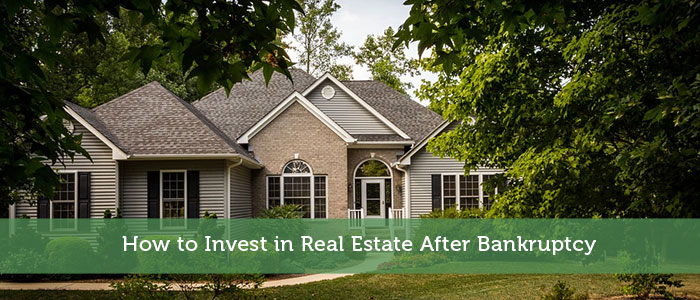Bankruptcy can offer you a fresh start when you are buried under an overwhelming amount of debt. If you have finally had all of your debt erased after filing for bankruptcy, you may be wondering what investment strategy you should approach. Sadly, for some recent filers, investing might be the last thing on their minds.
However, it’s never too early to start investing towards building a better and brighter financial future, especially now that you have a fresh start and are finally debt free. After all, filing for bankruptcy has given you the clean slate you need and will now allow you to focus on rebuilding your credit and portfolio back-up.
For most consumers, filing for bankruptcy will often mean that your cash balances and other assets may be drained from Chapter 7 bankruptcy liquidation or from a payment plan for Chapter 13. Even though certain retirement and pension funds are considered “exempt” in bankruptcy, most individuals will need to rebuild their savings and portfolios after filing.
Starting Off
After a life-changing event like filing for bankruptcy, it’s advised to start small and branch out. One popular method for post-bankruptcy investors is to begin investing in a simple savings program. Set up an automatic savings plan that adds funds to your savings account from your checking account.
Some popular forms of savings plans include:
- Index Funds
- CDs
- Online savings accounts
These options are geared towards a slow and steady pattern of growth. When you are low on financial resources, it’s best to avoid risky and one-off investments. After you’ve collected a small amount of capital in your savings account, you can begin to brainstorm other investment methods.
Recommended Bankruptcy Posts:
The Big Play
If you have filed for bankruptcy, you may have lost your home in the process. This means that deciding to invest in real estate could feel like you’re scuba diving without an oxygen source. Thankfully, time does heal all, including any stigmas you may have about investing.
The great part about saving right after bankruptcy is that you will have a down payment stashed away and ready for use when the right home comes along. Having a large down payment is actually a great way to increase your chances of getting approved for a mortgage!
Providing a large down payment is also key to saving thousands of dollars in the long term. Since you will have less principle to pay off, you will have fewer payments to make. Fewer payments translate into less interest you pay out of pocket.
Real Estate experts recommend that consumers wait at least 18 months after filing for bankruptcy before searching for a mortgage. As you well know, your credit report will reflect your bankruptcy filing for 7 to 10 years.
We advise waiting to apply for a mortgage simply due to interest. If you are an applicant with a recent bankruptcy, the bank may give you a high-interest mortgage or just disapprove you outright.
Recommended Real Estate Investing Posts:
This is because as a previous bankruptcy filer, you pose a higher risk to the mortgage provider. After you’ve filed for bankruptcy, you need to become a financially responsible member of society. To increase the chances of approval, you should ensure that all of your bills and payments are being reported to the three major credit bureaus.
When positive payment history is reported, your credit score will increase correspondingly.
A healthy credit score is actually one of the most effective investing tools since it can allow you to borrow capital at an affordable rate. If you have been paying all of your bills on time and your other accounts are current, a bank may consider you for a mortgage even after bankruptcy.
Final Note
If you do decide to wait a few more years, there is a great chance that you will be able to obtain more favorable interest rates on a mortgage. All in all, getting back to investing after filing for bankruptcy can be difficult. However, with a fresh start and no debt, you can begin the path to growing your portfolio quickly and efficiently.
Also compare the difference between chapter 7 and 11 bankruptcy.





